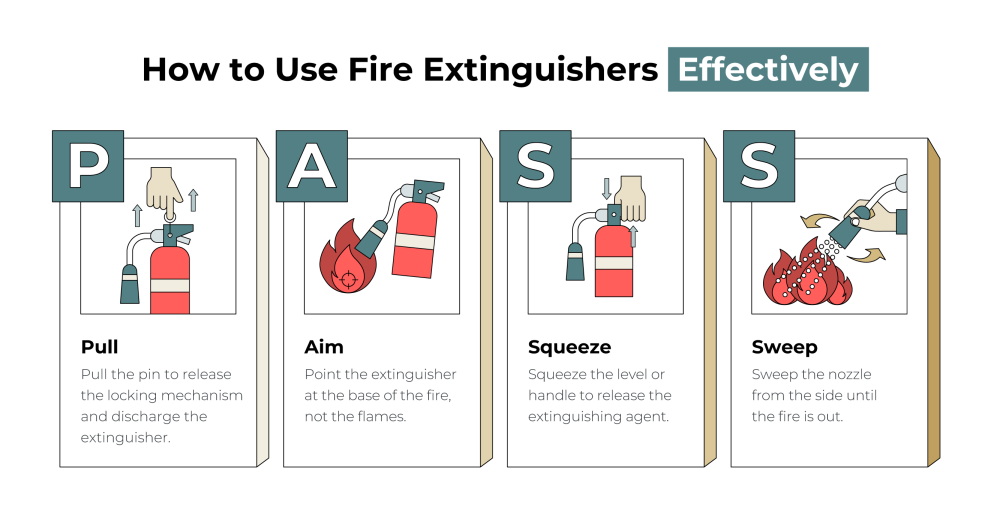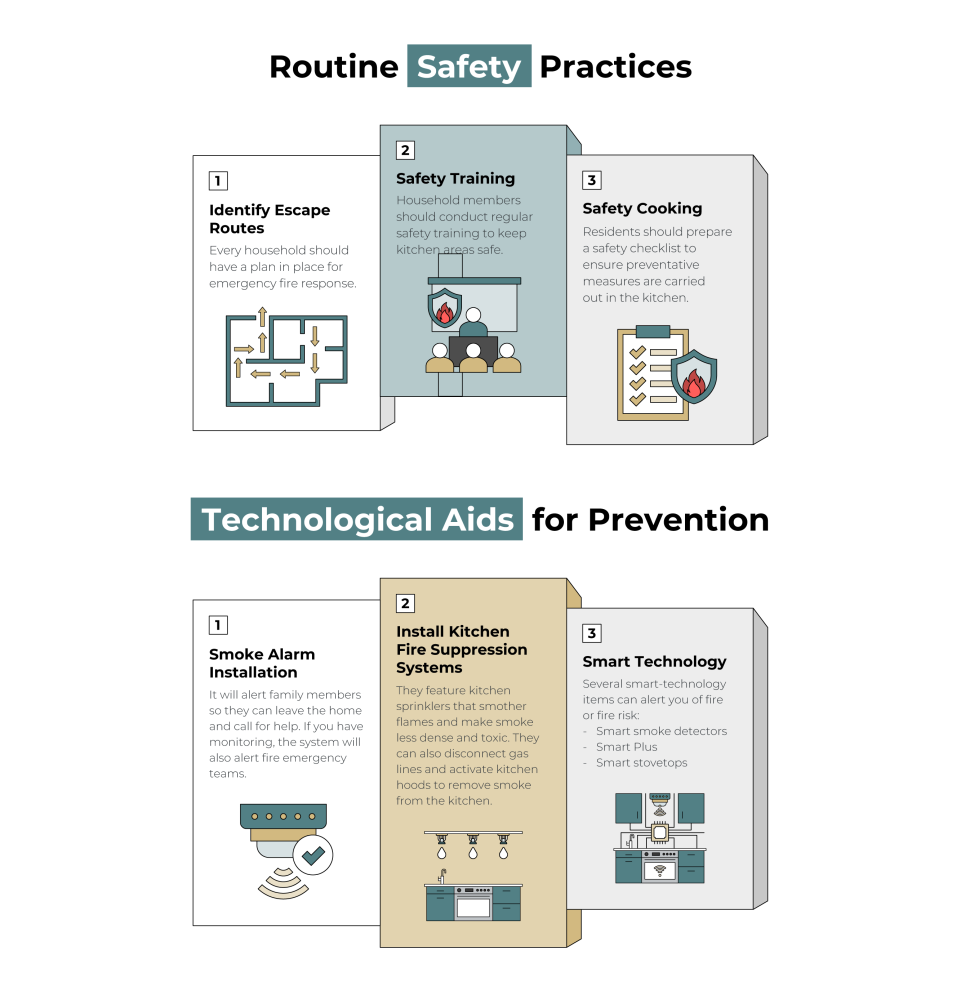Steps to Extinguish a Kitchen Fire
If a fire erupts, use the following steps to extinguish it immediately.
Immediate Actions to Take
Here is an emergency guide of steps to take to prevent a fire hazard from spreading.
- Turn off the heat: This includes electrical appliances stoves, and ovens.
- Cover it with a Lid: If possible, put a lid over the flaming pan to smother the fire.
- Use Baking Soda: If the fire is small, baking soda may help smother the flames.
- Never Use Water: Never use water to smother a grease fire. It will cause the flames to spread.
- Never Use Other Substances: Substances like flour, baking powder, sugar, salt, and wet towels can cause the fire to explode.
- Evacuate: If the fire gets out of hand, evacuate the building immediately and call emergency fire response services.

Using Fire Extinguishers Effectively
A fire extinguisher is key to kitchen fire safety. However, not everyone knows how to use this device. Here are some guidelines to keep in mind.
- Pull: Pull the pin to release the locking mechanism and discharge the extinguisher.
- Aim: Point the extinguisher at the base of the fire, not the flames.
- Squeeze: Squeeze the level or handle to release the extinguishing agent.
- Sweep: Sweep the nozzle from the side until the fire is out.
Use the acronym PASS to make this process easier to remember.

Preventative Strategies to Reduce Fire Risk
Knowing how to stop kitchen fire immediately is good, but it’s even better to prevent risk altogether. Here are some kitchen fire safety tips that will keep your home safe.
Routine Safety Practices
- Identify Escape Routes: Every household should have a plan in place for emergency fire response. They should identify escape routes so residents can perform fire evacuation if a fire occurs.
- Safety Training: Household members should conduct regular safety training to keep kitchen areas safe. Everyone should learn what to do if a kitchen fire occurs. They can carry out fire drills to simulate an emergency.
- Safety Cooking: Residents should prepare a safety checklist to ensure preventative measures are carried out in the kitchen. They should use non-combustible kitchenware and keep flammable materials far from heat sources. Childproofing kitchens also helps.
Technological Aids for Prevention
- Smoke Alarm Installation: A smoke alarm is a valuable kitchen safety tool. It will alert family members so they can leave the home and call for help. If you have monitoring, the system will also alert fire emergency teams.
- Install Kitchen Fire Suppression Systems: Kitchen fire suppression systems will help if a fire erupts. They feature kitchen sprinklers that smother flames and make smoke less dense and toxic. They can also disconnect gas lines and activate kitchen hoods to remove smoke from the kitchen.
- Smart Technology: Several smart-technology items can alert you of fire or fire risk. Smart smoke detectors send early warnings directly to your smartphone and can also alert emergency teams. Smart Plus allows homeowners to control appliances via an app. Smart stovetops use motion-sensing technology to shut off a stove if no movement is detected, preventing unattended cooking fires.

Conclusion and Safety Reminders
Kitchen fires are a common occurrence. You can prevent cooking fire hazards by turning off heat sources and using appropriate materials to smother the flames. Teach household members how to use a fire extinguisher and come up with a kitchen fire safety plan.
Review safety practices regularly and keep preventative gear like a fire blanket and fire extinguisher handy. Install technology to keep your kitchen safe. Follow these guidelines to avoid becoming another statistic.

